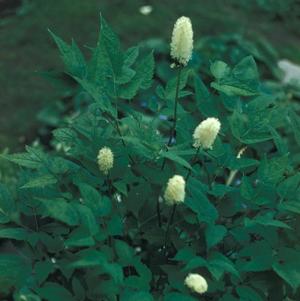General Description
Bloom Description: No flowers. The fronds are slow to appear in spring, usually arising in late May. The fiddleheads are small, delicate and covered with beautiful silvery hairs.
Growth Habit & Shape: Gorgeous vase shaped fern that readily forms colonies. The fronds are plume shaped with the widest portion in the middle.
Soil Preferences: This fern grows in rich humusy forest soils or rocky woodland soils. It can tolerate rocky upland soils, sandy forest sites, and forested wetland edges.
Root Description: Deparia is an upright growing rhizome, meaning that the plant forms a vase-shaped crown where the fronds arise. This fern spreads by a finger-sized rhizome that creeps through the garden forming colonies of individual plants. It is not aggressive, but a good colonizer.
Garden Uses: Use Deparia as a specimen or in groups throughout the garden. Plant near the edge to admire the beautiful, delicate fiddleheads as they emerge in the springtime. Use throughout the garden to bring together a variety of wildflowers or as a background species between shrubs and more delicate wildflowers.
Best Management & Maintenance: An easy-to-establish plant that can be planted and left alone. Easy to transplant. Transplanting is best done in the early in the season as the fiddleheads are beginning to emerge, but have been successful moving this plant throughout the season. Transplanted individuals need to be well watered while they establish.
Common Problems: none
Benefits
Ornamental Value: The silvery hairs that cover the stalks and silvery sori (spore cases) are lovely. The growth habit of the fern makes it easy to fit in between other perennials. Its fine texture allows it to blend well with larger, coarser perennials.
Wildlife Benefits: Provides cover for butterflies and moths.
Other Practical/Environmental Benefits:
Use in place of: Hosta
Ecology
Habitat:
Damp woods, often on slopes
Response to Disturbance: Although Deparia acrostichoides is easy to establish it appears that it is often found in older woodland or forested sites. Due to its rhizomotous nature, it may indeed regenerate following disturbances such as logging or nearby ground disturbances.
Native State Distributions:
Canada: N.B., N.S., Ont., P.E.I., Que
USA: AL, AR, CT, DE, GA, IL, IIN, IA, KY, ME, MD, MA, MI, MN, MO, NH, NJ, NY, NC, OH, PA, RI, SC, TN, VT, VA, WV., WI.
Wetland indicator status: FAC
Companion Plants:
Actaea sp., Aruncus dioicus, Iris cristata, I. virginiana, Cardamine sp., Packera ovata, Aquilegia canadensis, Polemonium reptans, Hydrangea arborescens, Gillenia sp., Phlox sp., Adiantum pedatum.
References
Return to Top
